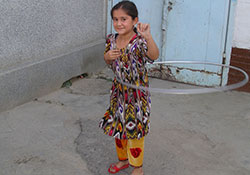Children and young people

WHO/Ardian Xinxo
WHO/Europe promotes and supports the implementation of the 2005 European strategy for child and adolescent health and development. It gives policy-makers a concrete means of addressing health issues and countering emerging threats to the health of children and adolescents. It is accompanied by a gender tool to assist Member States in not only collecting sex-disaggregated data but also making a gender analysis of these data and implementing the European strategy on child and adolescent health and development. The gender tool has so far been used in Albania, Georgia, Kyrgyzstan and Uzbekistan.
Evidence shows that gender differences and inequalities affect various aspects of illness and health in girls and boys. In the European Region, gender is relevant to adolescent health for many reasons. Many factors affect health but, as children grow, society (including their peers, parents and schools) expects them to fit into a gender pattern. By the time they reach adolescence, this is reflected in inequities.
Violence
- Girls attempt suicide more often, but boys have a higher suicide rate.
- Boys have higher rates of injuries and accidents.
- Boys and girls have different exposure to violence and types of violence.
Food
- There are consistent differences in eating disorders.
- Boys are more likely to be overweight, but girls more likely to say they are too fat.
- Boys report higher daily physical activity than girls at all ages.
Alcohol and tobacco
- Boys have a higher prevalence of substance abuse across Europe.
- Boys start smoking earlier but, by the age of 15, girls have higher weekly smoking rates in almost half of countries.
- Boys have higher rates of weekly drinking and cannabis use.



